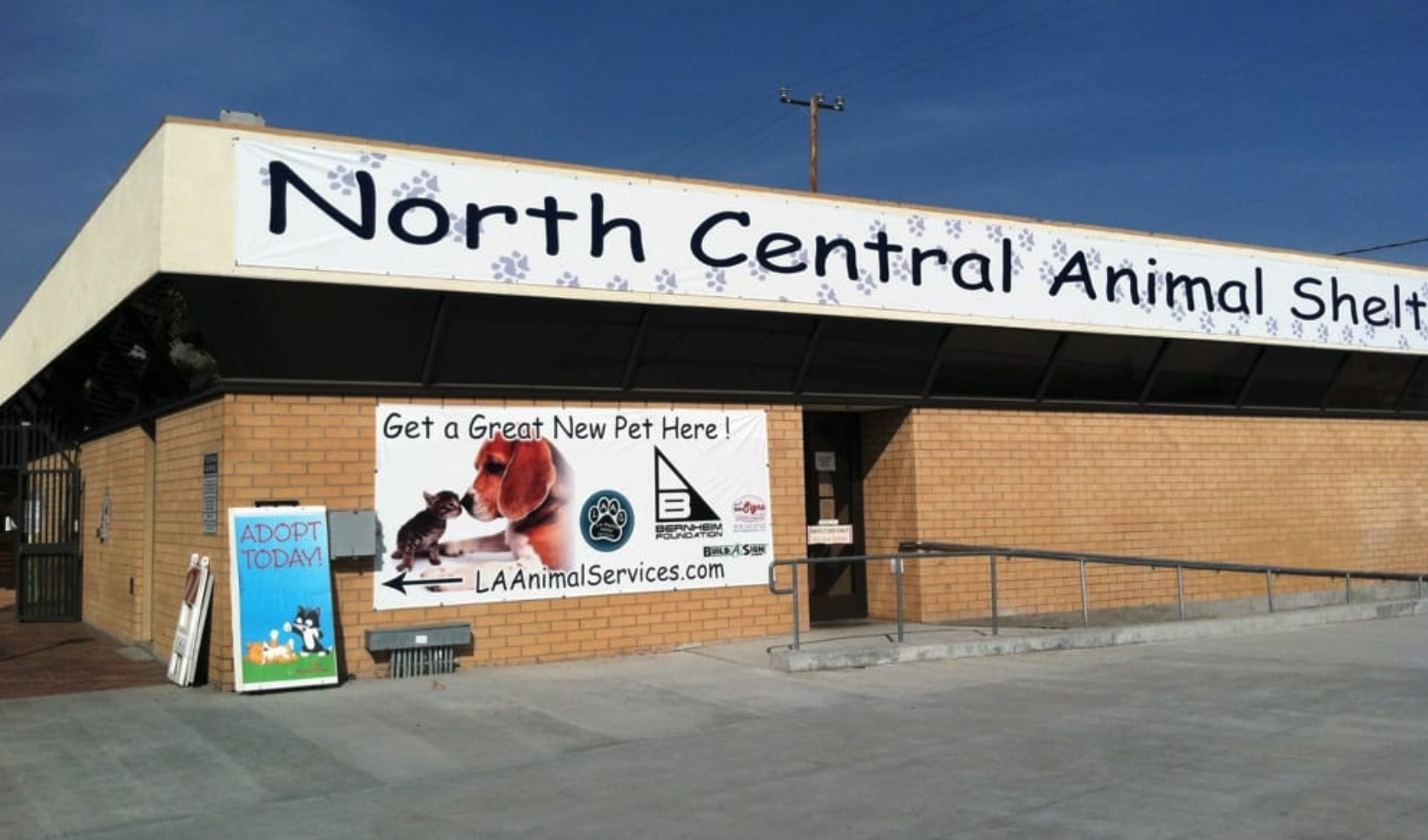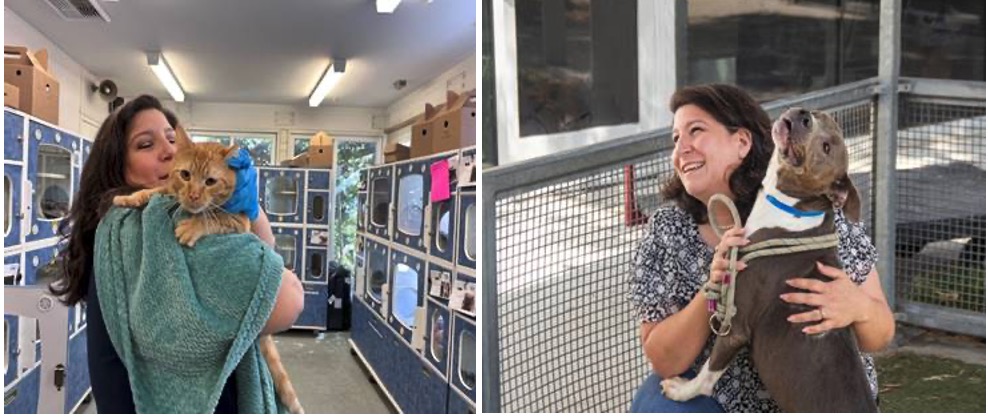Comments
ANIMAL WATCH - A two-year-old female Pit Bull, named Athena, attacked and severely injured a volunteer and an Animal Care Technician on June 30 during an attack at the Los Angeles Animal Services North Central Shelter, where she was available for adoption only to a “rescue.”
This means City shelter management knew she was a dangerous dog.
The description explained: “This animal is only available to 501(c)(3) rescue groups and is not available to the public as he or she requires further behavior modification.” (Emph. added.)
This brings up important questions. Since “rescues” purportedly prepare such dogs for adoption to the public, what “modification” criteria is required or expected for them to change the behavior of a dangerous animal to “safe?” This cannot continue to be a way of just emptying shelters.
And, doesn’t, “further behavior modification” imply the dog is already receiving some type of specialized behavior modification at LAAS?
If so, there is no mention in kennel records on this dog—after one month of impoundment— of it being offered “behavior modification” before it brutally mauled a volunteer that took it to a play yard and a kennel attendant (Animal Care Technician) who attempted to stop the attack, but didn’t have a “working radio.”
If this is just another way of saying the dog is too dangerous for the Department to risk placing it in a home, why wasn’t it—and others like it—humanely euthanized before it proves what they apparently already know by attacking caretakers at the North Central shelter?
This is now a question for Staycee Daines, the new General Manager of Los Angeles Animal Services, who took over one day after this inexcusable event occurred.
WHY LAAS KNEW ATHENA WAS DANGEROUS
Athena, a 52-lb., 2-year-old, Pit Bull was so aggressive that her owners had called LAAS and requested an animal control officer pick her up at their home on June 1, 2023, because she “had tried to bite them and they were afraid of dog,” according to the LAAS intake record.
The shelter acknowledged this by stating on the form, “SURRENDER FEE WAIVED DUE TO SAFETY CONCERNS . . . OWNER SURRENDERED DOG DUE TO DOG TRYING TO BITE UNPROVOKED SEVERAL TIMES.”
Even though the responding animal control officer noted, “DOG DID NOT TRY TO BITE DURING PICK UP OR IMPOUNDING,” that is not uncommon even for some aggressive dogs, because suddenly a person of authority was in control.” It does not indicate a fundamental change in behavior.
Athena was then vaccinated and spayed by the shelter (at taxpayer expense) and was made available to “rescue”—where her behavior would purportedly be “modified” for adoption to the public.
How do you prepare and assure modification of future behavior of a dog that has already attempted to bite the hands that fed it?
FURTHER BEHAVIOR NOTES ON ATHENA AT LAAS SHELTER

Volunteers at animal shelters across the nation provide valuable recreational time and diversion from confinement, but they must also have on-going training and reminders of safety precautions, which appear not to be given by Los Angeles Animal Services.
On 6/18/23, an entry was made as “BEHAVIORAL” by a volunteer who walked Athena:
“Easy to enter and leash. Pulls hard for her size, nonreactive to barking dogs in their kennels. In the yard she immediately started eliminating, then explored, frequently checking in with me. Tried to jump into my lap a few times then left it alone after verbal corrections.”
It continues, “She was very excited about [dog] playing fetch in the next yard, running along fence and barking when he got close. Almost always came when called—very good recall for a new dog. Pulled back to her kennel, still nonreactive to barking dogs in their kennels. Easy to unleash and exit.”
The question immediately arises as to why the Department would allow a volunteer so inexperienced and/or unprotected to exercise a dog with a known history of attempting to bite and have full frontal access to his/her body and face in a sitting position?
The volunteer seems also to be unaware that making a verbal or physical “correction” while in a vulnerable position can evoke a responsive attack. What safety training is being provided for volunteers at our City shelters?
Then, on 7/1/23, the following note entered about Athena.
ACT and VOLUNTEER ATTACKED (names omitted for privacy
“On Friday, June 30, around 2:30 pm ACT (Animal Care Technician) and Volunteer got attacked by Athena A#2086975.
We ran towards where the yelling was coming from and noticed the volunteer in MK14 unable to exit the door due to the dog attacking her.…
ACT [went] inside the kennel to help her out and starts getting attacked.
I ran inside to get help due to not having a working radio and had to leave my co-worker alone while getting attacked. (Emph. added.)
Volunteer ( ) followed me outside to the kennel to help assist to get the dog off of ACT [and] proceeded to the back of the kennel to get dog’s attention and dog eventually came to back of cubby and ( ) closed guillotine.”
7/3/23 USE CAUTION!
A note appears on Athena’s record:
“USE CAUTION! DOG BIT A STAFF MEMBER AND VOLUNTEER ON 06/30/2023.”
NOTES ON INJURIES
ANIMAL CARE TECHNICIAN – WOUNDS: MULTIPLE / SEVERE – Taken to L.A. County and USC for treatment of wounds – Rt hand, arm, leg and foot
VOLUNTEER was given scrub to clean wounds on upper chest and hand. Taking herself to Urgent Care. (In a conversation with another volunteer, these injuries were later indicated to be “serious.”)
7/3/23 NOTE
Note by Director of Field Operations Curiel: This animal is authorized for placement on the Red Alert List and if not committed to by a rescue within 48 hours, may be euthanized. (Emph. added)
On 7/11/23, Athena was “released from Rabies Quarantine by the L.A. County Department of Public Health, according to the LA Animal Services’ record, and was humanely euthanized “FOR SAFETY REASONS.”
No one likes to see this note on a record and no manager wants to have to issue such an order, but—just like people—not all animals in shelters are loving and grateful, and this manager is to be commended for making this necessary decision for everyone’s safety. (Let’s also hope she is offered critical-incident or other supportive counseling, but that has also been lacking at LAAS.)
WAS ATHENA RECEIVING “BEHAVIOR MODIFICATION” AT THE SHELTER?
The shelter had already admitted with its entry that this dog “needs further behavior modification” and was thus available to “rescue.” But, there is no indication any type of modification program begun at the shelter.
What “modification” could have guaranteed that this Pit Bull would not attack again? And why was she being offered for adoption to anyone?
QUESTION TO LAAS MANAGEMENT:
This article is just the latest in a long series of reports on attacks at Los Angeles Animal Services shelters (see below), yet the carnage continues. Here are some questions on management policy:
- Knowing this dog had tried to bite its owners, why would LAAS allow a shelter volunteer so inexperienced and unprotected to be in a situation where the dog was able to apparently have full frontal access to his/her body and face when it made an “attempt to jump into his/her lap?”
- Was this volunteer aware that many of such attacks are also generated by a “correction” given to an aggressive/dominant dog?
- With this year’s promises of added services and efficiencies enabled by a vastly increased budget for L.A. Animal Services and millions of dollars in donations to the Animal Welfare Trust Fund, why does any employee or volunteer NOT have a working radio when in the kennels?
- Why is the shelter continually holding dangerous dogs until personnel, a volunteer or an adopter is seriously injured or killed? Don’t we have enough that prove any shelter “behavior modification” program (or lack thereof) to prepare animals for “rescue” isn’t working? And, exactly what is LAAS offering to accomplish improved behavior of known dangerous animals, and is verified to be continued?
- If no such program is in place, why is the public paying for prolonged impounds of dogs that are continually injuring employees/volunteers and court settlements for cases that demonstrate the City’s inefficiency or deliberate endangerment of volunteers and adopters?
SPOTLIGHT ON LAAS NEW GENERAL MANAGER STAYCEE DAINES

(Staycee Daines pictured above leaving Long Beach Animal Shelter (left) and visiting South LA Shelter (right) after her appointment as LA Animal Services new General Manager on July 1, 2023.)
Staycee Daines was in charge of the Long Beach Animal Shelter since 2019, according to the Long Beach Press Telegram, and “has led the development of Long Beach’s ‘Compassion Saves’ model of animal management. ... That approach, adopted by the City Council in May 2019, isn’t a no-kill policy—but it does require the bureau to focus on reducing euthanasia and increasing pet adoption rates.”
The total population of cats and dogs when the Long Beach shelter announced recently it was at “critical capacity” was 233 (less than the L.A. Harbor shelter, alone.)
It is unknown what particular attribute made her stand out among a list of candidates to take over the massive six-shelter L.A. City system, but some things are obvious.
As a priority, GM Daines must launch an immediate investigation into L.A. Animal Services’ record of attacks and injuries (and lawsuits).
She must also make a determination of whether known-dangerous animals are receiving the initial “behavior modification” that is implied at L.A. Animal Services before they go to “rescues.” And, are they receiving the required “further behavioral modification” before release?
And, exactly what verification/audit of these services is required for any 501(c)3 organization to be qualified as a “rescue” by LAAS?
Or is the LA City shelter system merely passing on dangerous dogs to “rescues” to maintain the illusion of Best Friends Animal Society’s “No Kill” mandate for public shelters and the subsequent donations?
“No Kill” does not mean that no animals are euthanized; but, increasingly, it means that a predictable injury or death is required to justify what should have been the responsible action taken by the shelter to protect public—and employee—safety.
The attack by Athena on June 30 is the first revealed at LAAS since new GM Stacey Daines took over the reins on July 1. We are waiting to see whether a person with very limited shelter management experience can make the necessary changes in L.A.’s huge six-shelter system—or if Assistant GM Annette Ramirez will continue to direct Department policy.
Whenever new GM Daines is ready to make a statement about her plans to correct these issues at LAAS, Los Angeles is waiting.
ALSO SEE:
Pit Bull Attack at LA Animal Services Shelter Leaves Two Injured.
LA Animal Services' Employee Mauled by Pit Bull ... Who Cares?
Pit Bull Mauls Adopter, Attacks LA Animal Services Shelter Employee --Their Lives Matter!
(Phyllis M. Daugherty is a former Los Angeles City employee, an animal activist and a contributor to CityWatch.)







